The Marble Hatchetfish (Carnegiella strigata) is a captivating species known for its unique appearance and intriguing behaviors. This article delves into various aspects of this fish, from its scientific classification to its habitat and diet, and even some fun facts.
Scientific Information and Classification
- Scientific Name: Carnegiella strigata
- Family: Gasteropelecidae
- Order: Characiformes
- Class: Actinopterygii
- Phylum: Chordata
- Kingdom: Animalia
Table of Contents
The Marble Hatchetfish belongs to the Gasteropelecidae family, which includes other hatchetfish species. Its scientific name, Carnegiella strigata, was given by Günther in 1864. The genus name Carnegiella honors Andrew Carnegie, a notable philanthropist, while strigata means “striped” in Latin, referring to the fish’s distinctive pattern.
Marble Hatchetfish are native to the Amazon Basin in South America, thriving in slow-moving, acidic waters rich in vegetation. They are primarily surface dwellers, often found near the water’s surface where they can easily catch insects. These fish are known for their remarkable jumping ability, which they use to escape predators and catch prey.
These fish are small, typically growing to about 3.5 cm (1.4 inches) in length. They have a unique hatchet-shaped body, which is where they get their name. Their coloration includes a marbled pattern of brown and cream, with a gold line running from the eye to the tail. This pattern helps them blend into their environment, resembling a dead leaf floating on the water’s surface.
Marble Hatchetfish are omnivores, feeding on a variety of foods. In the wild, their diet includes insects, larvae, and small crustaceans. In an aquarium setting, they can be fed a mix of high-protein flakes, bloodworms, and flightless fruit flies, which they particularly enjoy.
These fish are peaceful and do well in community tanks with other non-aggressive species. They are best kept in schools of at least six to ensure they feel secure. However, they can be shy and are easily intimidated by larger or more active fish. A tight-fitting lid is essential for their tank, as they are known to jump out when startled.
Fun Facts and Interesting Tidbits
- Jumping Ability: Marble Hatchetfish can jump several feet out of the water, propelled by their strong pectoral muscles.
- Camouflage Experts: Their marbled pattern and sideways swimming mimic a dead leaf, providing excellent camouflage.
- Short Lifespan: They typically live for about two years in captivity, which is relatively short compared to other aquarium fish.
The Marble Hatchetfish is fascinating due to its unique adaptations and behaviors. Its ability to jump out of the water and its camouflage tactics are remarkable survival strategies. Additionally, its peaceful nature and striking appearance make it a delightful addition to any aquarium.
A study published in Aquaculture explored the use of EfinolL during the transportation of Marble Hatchetfish, highlighting the species’ sensitivity to stress and the importance of proper handling to ensure their well-being during transit.
Marble Hatchetfish have been popular in the aquarium trade for many years due to their unique appearance and interesting behaviors. They require specific water conditions, including a pH of 5.6 to 6.5 and temperatures between 74°F to 80°F. Providing a tank with plenty of open water and some floating vegetation will help them feel secure.
In the aquarium trade, Marble Hatchetfish are sometimes referred to as Marbled Hatchetfish or simply Hatchetfish. These names reflect their distinctive marbled pattern and hatchet-like body shape.
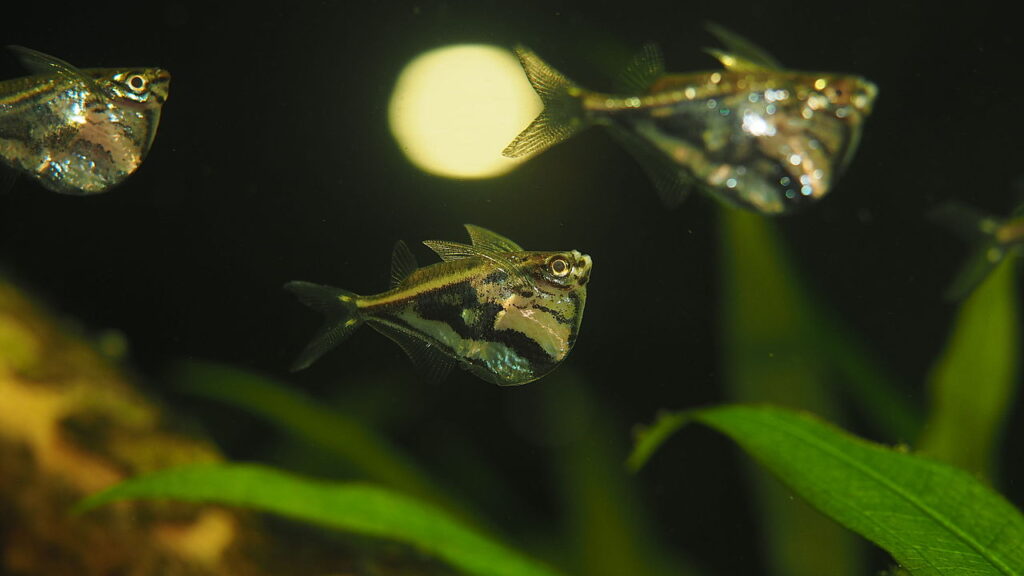
Marble Hatchetfish Key Information
The Marble Hatchetfish is a captivating species known for its unique appearance. Its body is hatchet-shaped with a deep, bulbous belly and high-set pectoral fins. The fish displays a stunning array of colors, including a shimmering brown body adorned with a subtle rainbow sheen. A golden line runs from its eye to the tail, while the lower body features a striking marble-like pattern of brown and cream. This intricate coloration, combined with its distinctive shape, makes the Marble Hatchetfish a visually appealing addition to any aquarium.
| Family | Gasteropelecidae |
| Origin | South America (Amazon Basin) |
| Price | $5 – $10 per fish |
| Common Names | Marbled Hatchetfish, Hatchet |
| Variants | No known variants |
| Ideal Tank Size | 20-30 gallons |
| Water Parameters | pH: 5.5-7.5, Temperature: 74-82°F (23-28°C) |
| Lifespan | 3-5 years |
| Full Size | 1.4-2 inches (3.5-5 cm) |
| Natural Environment | Slow-moving, acidic waters with vegetation |
| Behavior | Peaceful, schooling fish |
| Habitat Preference | Surface dweller |
| Aquarium Decoration | Heavily planted with floating plants |
| Ideal Tank Mates | Other peaceful, small fish |
| Fish to Avoid | Large or aggressive species |
| Best Foods/Diet | Insects, small crustaceans, high-quality flakes |
| Disease | Susceptible to common freshwater fish diseases |
| Sex-switch | No known sex-switching ability |
| Gender Differences | No visible differences |
| Care Level | Intermediate |
| Breeding Level | Difficult |
Ideal Tankmates for Marble Hatchetfish
The Marble Hatchetfish thrives in a community tank with peaceful, non-aggressive fish. When choosing tank mates, it’s crucial to select species that share similar water parameters and behaviors. Here are ten ideal companions for the Marble Hatchetfish, each with unique traits that make them compatible.
Neon Tetra
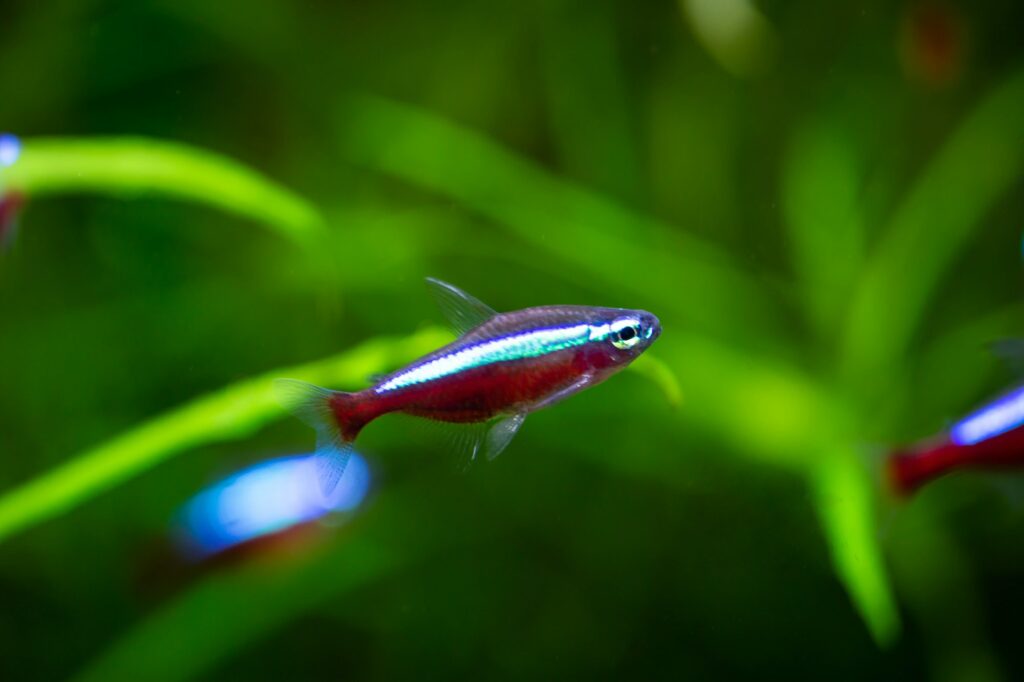
Neon Tetras are small, colorful fish that make perfect companions for Marble Hatchetfish. Their peaceful nature and preference for the middle to lower tank levels ensure they don’t compete for space with the surface-dwelling hatchetfish.
| Common Names | Neon Tetra |
| Price Range | $1 – $3 |
| Care Level | Easy |
| Behavior | Peaceful, schooling |
| Life Span | 5-8 years |
| Max Size | 1.5 inches (4 cm) |
Corydoras Catfish
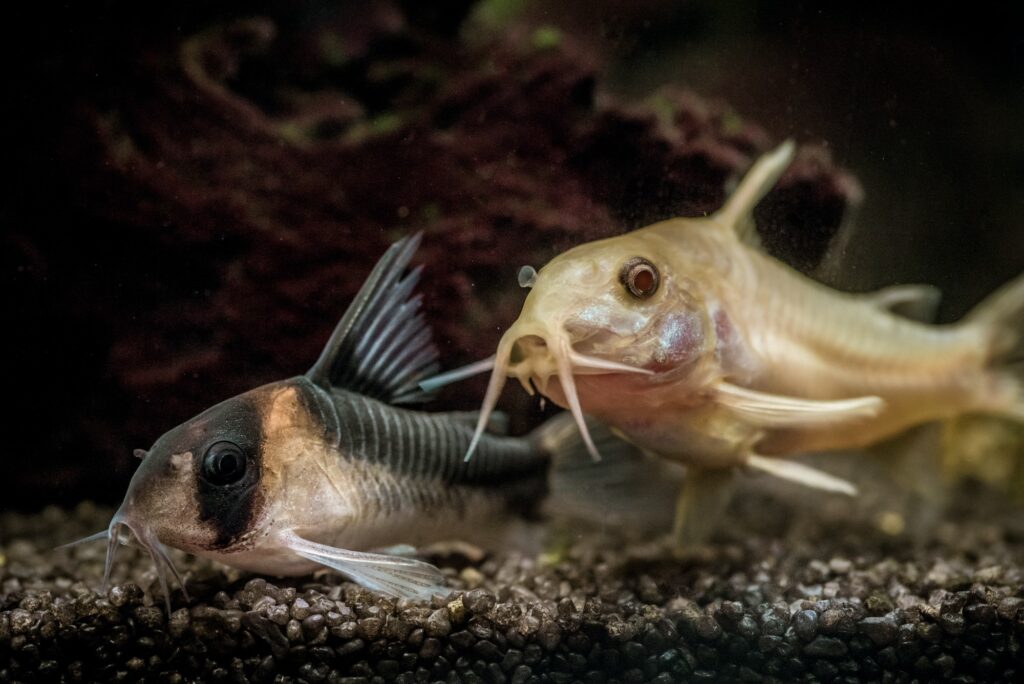
Corydoras Catfish are bottom-dwelling scavengers that help keep the tank clean. Their peaceful demeanor and different habitat preference make them excellent tank mates for Marble Hatchetfish.
| Common Names | Cory Catfish, Corydoras |
| Price Range | $3 – $10 |
| Care Level | Easy |
| Behavior | Peaceful, schooling |
| Life Span | 5 years |
| Max Size | 2.5 inches (6 cm) |
Harlequin Rasbora

Harlequin Rasboras are active, peaceful fish that add vibrant color to the tank. They occupy the middle water column, ensuring they don’t interfere with the Marble Hatchetfish’s space.
| Common Names | Harlequin Rasbora |
| Price Range | $2 – $5 |
| Care Level | Easy |
| Behavior | Peaceful, schooling |
| Life Span | 5-6 years |
| Max Size | 2 inches (5 cm) |
Ember Tetra
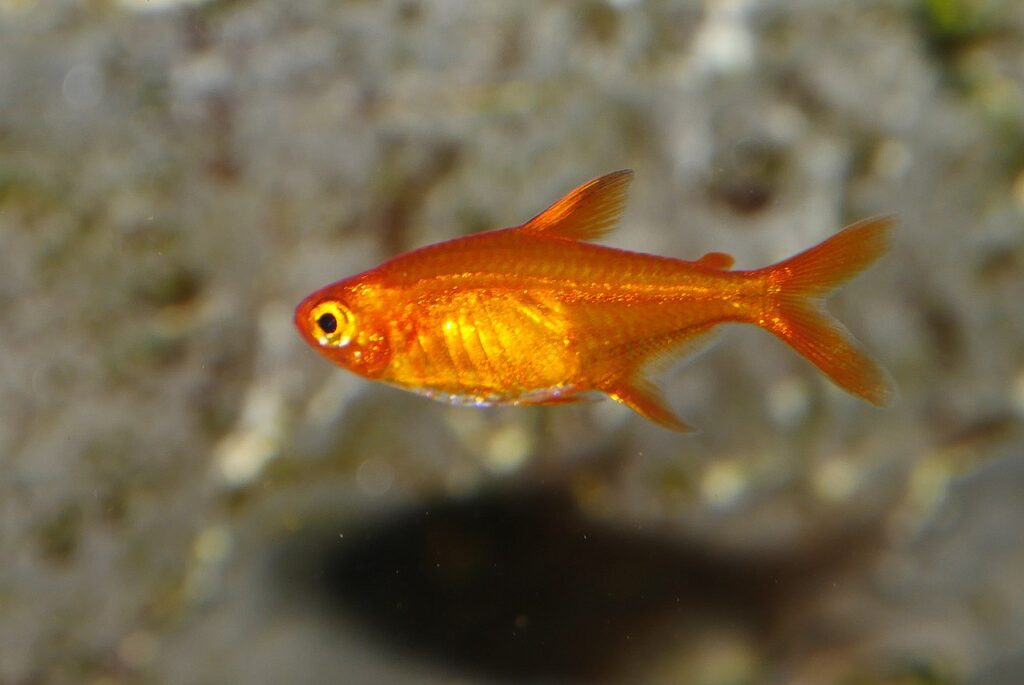
Ember Tetras are small, fiery-colored fish that are both peaceful and active. Their preference for the middle to lower levels of the tank makes them compatible with Marble Hatchetfish.
| Common Names | Ember Tetra |
| Price Range | $1 – $3 |
| Care Level | Easy |
| Behavior | Peaceful, schooling |
| Life Span | 2-4 years |
| Max Size | 1 inch (2.5 cm) |
Dwarf Gourami
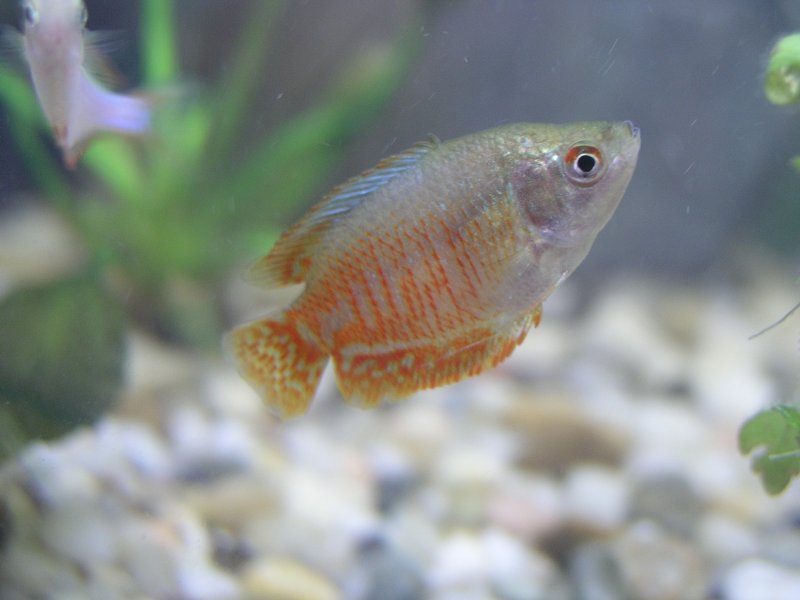
Dwarf Gouramis are colorful and peaceful fish that can coexist well with Marble Hatchetfish. They prefer the middle to upper levels of the tank and are known for their calm demeanor.
| Common Names | Dwarf Gourami |
| Price Range | $5 – $10 |
| Care Level | Moderate |
| Behavior | Peaceful |
| Life Span | 4-6 years |
| Max Size | 3.5 inches (9 cm) |
Rummy Nose Tetra
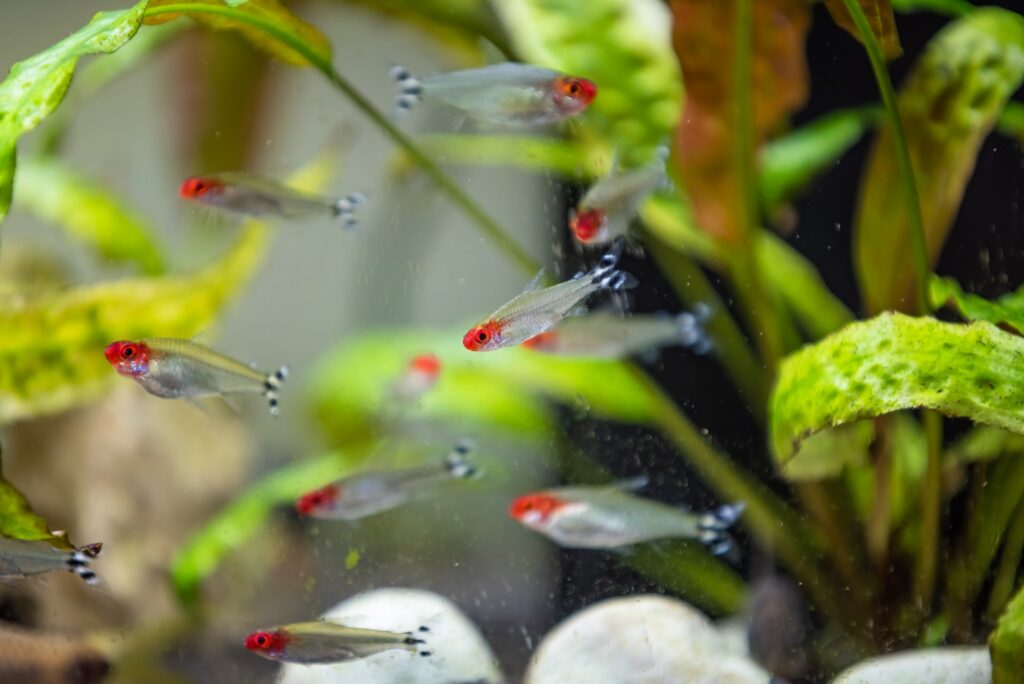
Rummy Nose Tetras are known for their distinctive red noses and peaceful nature. They prefer the middle levels of the tank and are excellent schooling fish, making them suitable companions for Marble Hatchetfish.
| Common Names | Rummy Nose Tetra |
| Price Range | $2 – $5 |
| Care Level | Moderate |
| Behavior | Peaceful, schooling |
| Life Span | 5-6 years |
| Max Size | 2 inches (5 cm) |
Otocinclus Catfish
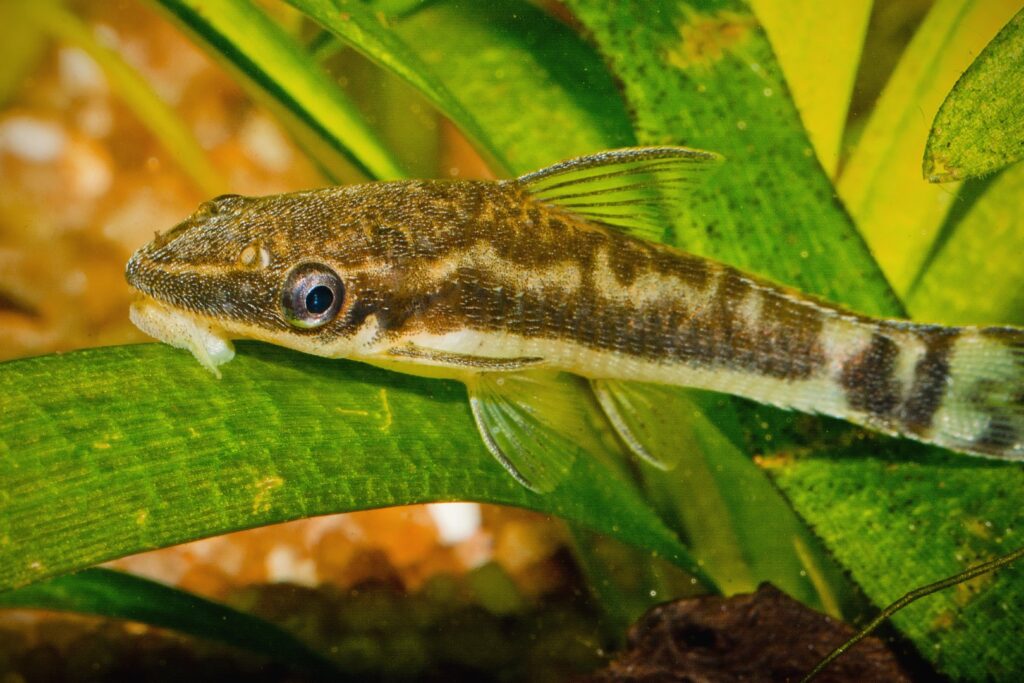
Otocinclus Catfish are small algae eaters that help keep the tank clean. Their peaceful nature and bottom-dwelling habits make them ideal tank mates for Marble Hatchetfish.
| Common Names | Oto Cat, Dwarf Suckermouth |
| Price Range | $2 – $5 |
| Care Level | Easy |
| Behavior | Peaceful, schooling |
| Life Span | 3-5 years |
| Max Size | 2 inches (5 cm) |
Cardinal Tetra
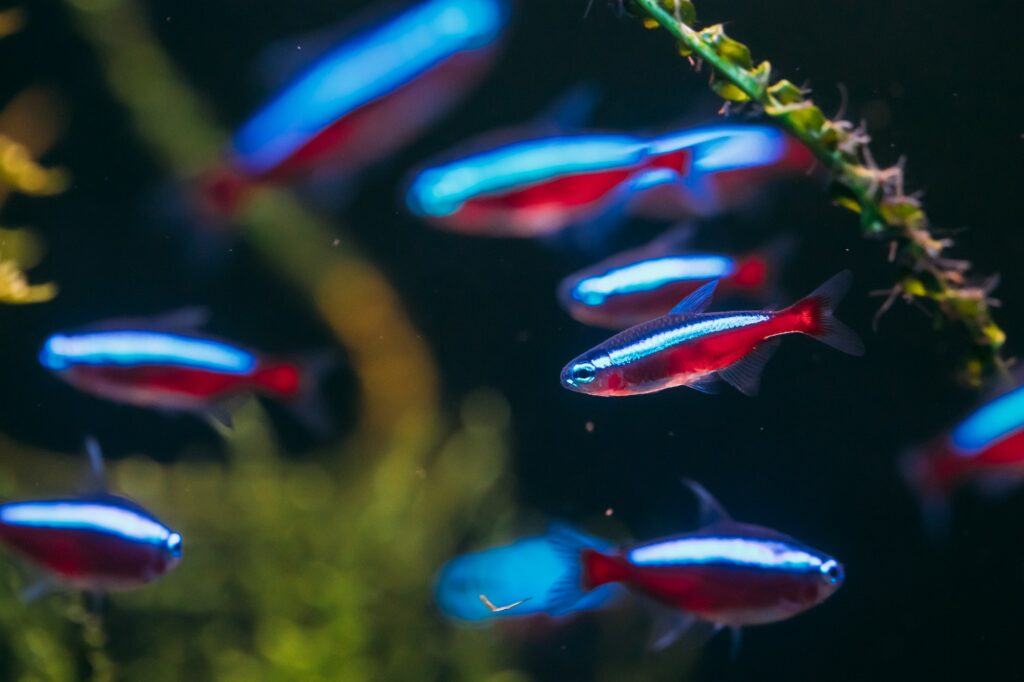
Cardinal Tetras are similar to Neon Tetras but with a more vibrant red stripe. Their peaceful nature and preference for the middle levels of the tank make them excellent companions for Marble Hatchetfish.
| Common Names | Cardinal Tetra |
| Price Range | $2 – $5 |
| Care Level | Easy |
| Behavior | Peaceful, schooling |
| Life Span | 4-5 years |
| Max Size | 2 inches (5 cm) |
Cherry Barb
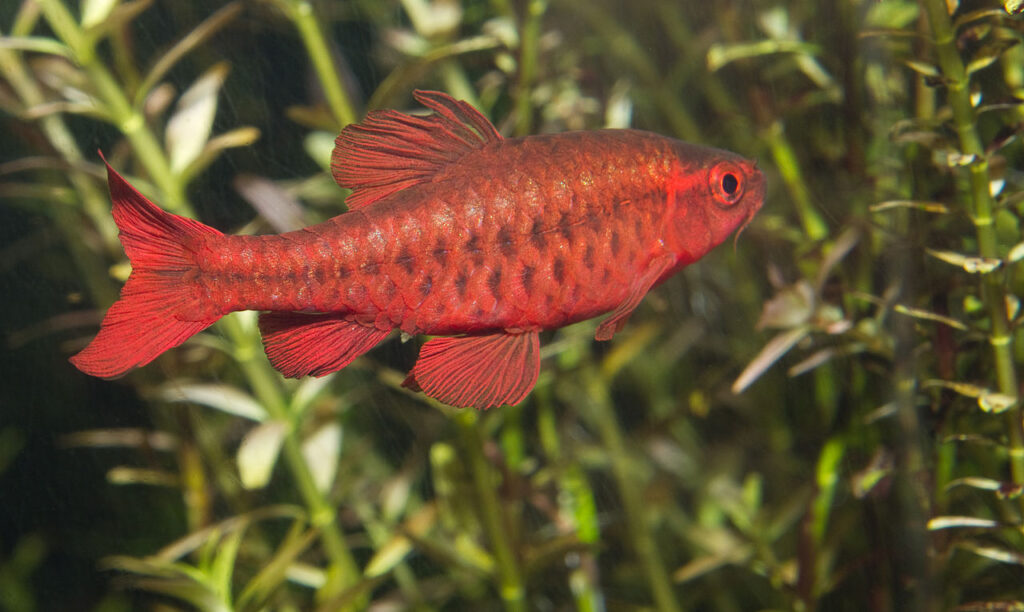
Cherry Barbs are colorful and active fish that prefer the middle to lower levels of the tank. Their peaceful nature makes them compatible with Marble Hatchetfish.
| Common Names | Cherry Barb |
| Price Range | $2 – $5 |
| Care Level | Easy |
| Behavior | Peaceful, schooling |
| Life Span | 5-7 years |
| Max Size | 2 inches (5 cm) |
Zebra Danio
Zebra Danios are hardy and active fish that prefer the middle levels of the tank. Their peaceful nature and ability to thrive in various water conditions make them suitable tank mates for Marble Hatchetfish.
| Common Names | Zebra Danio |
| Price Range | $1 – $3 |
| Care Level | Easy |
| Behavior | Peaceful, schooling |
| Life Span | 3-5 years |
| Max Size | 2 inches (5 cm) |
FAQs about Marble Hatchetfish
How can I prevent Marble Hatchetfish from jumping out of the tank?
Marble Hatchetfish are known for their remarkable jumping abilities. To prevent them from leaping out of the tank, it is essential to use a tight-fitting lid. Additionally, covering any gaps around the tank’s edges with mesh or other materials can help ensure that the fish remain safely inside.
What are the ideal water conditions for Marble Hatchetfish?
Marble Hatchetfish thrive in soft, acidic water. The ideal pH range is between 5.5 and 6.5, with a water hardness of 2.0 to 12.0 dGH. The water temperature should be maintained between 74°F and 80°F (23°C to 27°C). Keeping these water parameters stable is crucial for the health and well-being of the fish.
How often should I feed Marble Hatchetfish?
Marble Hatchetfish should be fed once or twice a day. They prefer small, protein-rich foods such as mosquito larvae, bloodworms, fruit flies, and brine shrimp. It is important to feed them at the water surface, as they are surface feeders and will not eat food that sinks to the bottom.
Can Marble Hatchetfish be kept with other hatchetfish species?
While Marble Hatchetfish can be kept with other hatchetfish species, it is important to ensure that the tank is large enough to accommodate all the fish comfortably. Overcrowding can lead to territorial disputes and stress. A tank with plenty of surface area and hiding spots is ideal for keeping multiple hatchetfish species together.
How can I tell the difference between male and female Marble Hatchetfish?
Differentiating between male and female Marble Hatchetfish can be challenging. Generally, females are plumper and larger than males, especially when viewed from above. During the pre-spawning period, females may also appear more rounded due to the presence of eggs.
What are some common diseases that affect Marble Hatchetfish?
Marble Hatchetfish are susceptible to common freshwater fish diseases such as Ich (white spot disease) and fin rot. Stress from poor water conditions or inadequate tank mates can increase their susceptibility to these diseases. Maintaining optimal water quality and providing a stress-free environment can help prevent illness.
How do Marble Hatchetfish reproduce?
Marble Hatchetfish are egg scatterers. In the wild, they lay their eggs among dense vegetation. In an aquarium setting, providing plenty of floating plants and soft, acidic water can encourage spawning. However, breeding Marble Hatchetfish in captivity can be challenging and requires specific conditions.
What type of aquarium decoration is best for Marble Hatchetfish?
Marble Hatchetfish prefer tanks with plenty of open water and some floating vegetation. Plants like water lettuce provide cover and mimic their natural habitat. Additionally, tall plants with leaves reaching the water surface can offer security and hiding spots for the fish.
Are Marble Hatchetfish suitable for beginners?
Marble Hatchetfish are considered intermediate in terms of care level. While they are peaceful and can be kept in community tanks, they require specific water conditions and a secure tank lid to prevent jumping. Beginners should be prepared to maintain stable water parameters and provide a suitable environment for these fish.
How long do Marble Hatchetfish live?
Marble Hatchetfish typically live for 3 to 5 years in captivity. Providing optimal water conditions, a varied diet, and a stress-free environment can help maximize their lifespan. Regular tank maintenance and monitoring for signs of illness are also important for their longevity.